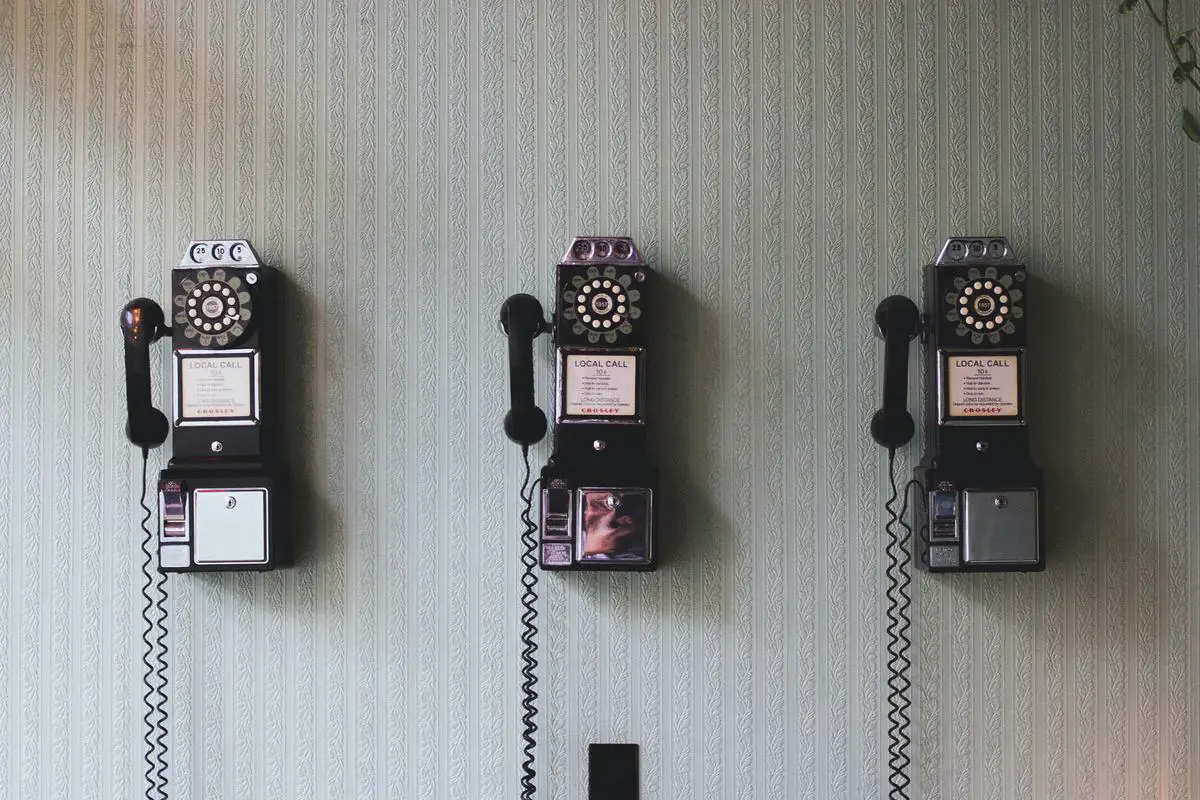As a linchpin of human interaction, communication permeates every facet of our daily lives. More so, in professional settings the function of good communication can never be overstated— it’s the lifeblood of every business. Effective communication not only strengthens team collaboration, fosters innovation, but also ensures the smooth flow of information. However, with the prevalence of various channels of communication and the complexity of human interactions, communication mishaps become inevitable. This exploration takes a deep dive into the world of communication mishaps, seeking to uncover the potential pitfalls while gleaning potential strategies for evasion. From understanding the fundamental underlying theories of communication to unraveling the impacts of common communication mishaps, this discourse provides valuable insights. It further probes the role of technology in reshaping the communication landscape, serving at times as both a boon and a bane.
Understanding Communication
Understanding Communication: Essentials and Significance
In the landscape of a professional setting, communication is the building block that holds together the infrastructure of relationships, partnerships, and collaboration. Thus, it’s crucial to understand its nature, process, and the types of communication that exist in various environments.
There are generally two types of communication: verbal and non-verbal. Verbal communication pertains to using words to convey messages, and it can be oral or written. Non-verbal communication involves actions, gestures, facial expressions, and other physical cues to transmit information.
The process of communication entails the sender encoding a message and transmitting it via a communication channel to a receiver who decodes the message. Feedback subsequently loops back to the sender, signifying a completed communication cycle.
Effective communication plays a pivotal role in professional settings because it fosters understanding, improves teamwork, encourages sharing of ideas, and promotes a positive work environment. The lack thereof can lead to misunderstanding, conflict, lack of cooperation, and decreased efficiency.
Comprehensive Exploration of Communication Mishaps: From Theoretical Insights to Practical Obstacles
Often termed as communication failures, communication mishaps are scenarios where the intended message is inaccurately interpreted by the recipient. These usually stem from a range of obstacles or barriers hindering effective communication.
Barriers to effective communication can be broken down into five categories: physical, semantic, emotional, cultural, and perceptual. Physical barriers are environmental factors such as noise or technology issues that inhibit communication, while Semantic barriers reflect instances where words or phrases are interpreted differently by the sender and receiver. Emotional barriers connect to personal feelings, beliefs, or prejudices that may contort the delivered message, whereas cultural barriers may be borne out of variances in cultural norms, languages, and traditions. Perceptual barriers, on the other hand, relate to differing perceptions, viewpoints, or simple misunderstandings.
A spectrum of theories exist offering valuable insights into the root causes of communication mishaps, and potential solutions. Noise Theory, for example, delves into the physical, psychological, and semantic ‘noise’ or interruptions that can hinder clear communication. Gatekeeper Theory pays heed to the role of individuals or groups who regulate the flow of information, which could potentially result in communication mishaps. The Communication Accommodation Theory posits that while people adjust their speech, vocal patterns, and various gestures in a conversational exchange, such adjustments can also lead to misunderstandings.
The Shannon-Weaver model interestingly dissects the entire communication process to identify likely points of breakdown. Incorporating five key stages – sender, encoder, channel, decoder, and receiver – this model robustly illustrates opportunities for communication mishaps. Ultimately, these theories underline the intricate nature of communication and the potential lapses that can escalate if proper awareness, adaptability, and flexibility are not diligently maintained, especially within professional contexts.

Common Communication Mishaps and Their Impact
Manifestations of Communication Mishaps within Workplace Dynamics
Communication, as a quintessential tool within the workplace, has the potential to either elevate or obstruct a company’s overall performance and morale. The negative repercussions of communication mishaps can range from reduced productivity to internal discord via misunderstandings, culminating often in improper execution of duties.
Hierarchical communication issues, which pertain to ineffective communication between varying company levels, additionally constitute a major concern. The absence of succinct and transparent communication from one level to another can plant seeds of confusion, misunderstanding, and potentially even resentment. As a result, this could trigger an unfortunate series of events from project delays to losing valuable clients, all of which directly hit the organization’s productivity and profitability.
Impact of Communication Mishaps in Virtual Communication
In the era of digital communication, mishaps can occur even more frequently. For example, technology issues like poor internet connection, malfunction of communication tools, or even time-zone mismatch could lead to missed or delayed messages and can drastically impact virtual meetings.
In addition, loss of non-verbal cues in virtual settings could lead to misinterpretations. A message can lose its intended tone when delivered through an electronic device, potentially causing hurt feelings or misunderstandings. These technological mishaps can foster feelings of disconnection and frustration among team members, and negatively impact the efficiency and outcome of collaborative projects.
Real-World Examples of Communication Mishaps
One example of a major communication mishap that caused significant loss was in a NASA Mars Orbiter mission. In 1999, the spacecraft was lost in space due to a simple miscommunication: one engineering team used English units of measurement while the other used metric units. The mishap cost NASA $125 million.
In everyday life, communication mishaps occur regularly with impactful consequences. For example, in a restaurant setting, a misheard order could result in an unhappy customer and a wasted meal. In a hospital setting, a miscommunication between doctors and nurses can result in wrong medication dosage or incorrect surgical procedures,resulting in life-threatening situations.
Negative Impact of Communication Mishaps on Organizations and Relationships
On an organizational level, communication mishaps can disrupt workflow, lower employee morale, and indirectly impact the company’s bottom line. They may lead to flawed decision-making, unnecessary delays, and lower productivity.
These mishaps can tarnish a company’s reputation externally. For instance, miscommunication in customer service can lead to client dissatisfaction or even loss of clients.
On a personal level, communication mishaps can strain relationships. Employees may feel that their voices are not heard or their ideas are not appreciated. This could result in demotivated staff and high employee turnover rates.
Setting the Stage for Communication Mastery
Embarking on the journey to sidestep communication obstacles begins with recognizing and understanding them. Once these potential hurdles are identified, the path to addressing and eventually sidestepping them becomes clearer. This endeavor not only sharpens one’s individual interpersonal skills but can also significantly enhance the dynamics within organizations, fostering improved efficiency, client rapport, and overall success.

Photo by austindistel on Unsplash
Role of Technology in Communication Mishaps
The Tech Revolution and Its Impact on Communication
The technological revolution has unquestionably revamped our communication paradigm. Digital avenues such as emails, instant messaging, video conferencing, and social media have taken center stage for both personal and professional exchanges. Despite the convenience and immediacy they offer, it’s impossible to ignore the rise in communication blunders that parallel these advancements. These platforms, while efficient, bear an alarming potential for misunderstandings and miscommunication, subsequently fuelling interpersonal and work-related discord.Common Communication Mishaps in a Digital World
One common issue with digital communication is poor email etiquette. Emails lack the subtle cues – like tone of voice, facial expressions, and body language – that play an integral part in in-person communication. As a result, an email that’s intended to be neutral can easily be perceived as rude or standoffish. Similarly, the brevity of text messages and the use of acronyms and emojis can often lead to misunderstanding or seeming unprofessional. Mishaps are also frequent in remote communication, especially due to network issues, technological glitches, and other unpredictable factors like background noise. These issues can disrupt the flow of communication, making it difficult to interpret the message as intended. Besides, digital communication breaches the distance barrier, allowing individuals from different backgrounds, cultures, and languages to communicate, increasing potential for miscommunication. Without the grasp of cultural nuances and sensitivities, messages might be interpreted incorrectly, which can lead to misunderstandings or conflicts.Optimized Use of Technology to Improve Communication
While it is true that technology has amplified the likelihood of communication mishaps, it also provides potential solutions to these issues. Being aware of the potential pitfalls of digital communication is the first step towards utilizing technology more effectively for its advantages. Polishing email etiquette can lessen the likelihood of misunderstanding. Mindful communication, such as rereading before sending, considering the recipient’s perspective, and using clear and concise language, can significantly increase clarity and reduce misinterpretation opportunities. In remote communication, it is important to choose reliable and effective tools. Regular device and software updates, along with a stable and fast internet connection, can greatly minimize technological glitches. Muting microphones while not speaking, using headphones, and ensuring a quiet environment can significantly reduce background noise and distractions. In multicultural and multilingual communication, the use of technology can be critical. Online tools such as language translation software can aid in reducing language barrier issues. At the same time, awareness and understanding of different cultures can also help mitigate potential communication mishaps.Embracing the Future of Communication and Technology
Advancements in technology carve paths for new patterns of communication, inevitably altering existing channels. Remaining flexible, alert, and ready to adapt to these dynamic shifts is key to thriving amidst digital evolution. By staying informed about new technologies and comprehending their ripple effects on communication, the likelihood of encountering obstacles is reduced, paving the way to make optimum use of digital communication avenues.

Preventing and Overcoming Communication Mishaps
Deciphering the Puzzle of Communication Mishaps
Miscommunication, or more commonly referred to as communication mishaps, are all too easy to fall into. Such mishaps have the potential to kindle conflicts, sow discord, dampen productivity and disturb the balance of both professional and social environments. These missteps tend to be rooted in flawed reasoning, misinterpretation, distractions, faulty perception, cultural misalignment, or an absence of clarity and emotional intelligence.
Preventing Communication Mishaps through Problem-Solving Techniques
One of the keys to preventing communication mishaps involves adopting effective problem-solving strategies. These techniques include defining the problem clearly, brainstorming possible solutions, analyzing each option’s merits and drawbacks, choosing the most effective option, and implementing that solution. Consistent follow-up actions after the solution’s application ensures that communication remains clear.
The Role of Feedback
Feedback is an essential tool for averting communication mishaps, as it allows for an open dialogue and clarification of any misunderstandings. Feedback should be constructive, specific, timely, and issue-focused, rather than personalized. Encouraging an environment where feedback is valued and appreciated can help in catching communication mishaps early and rectifying them before they escalate further.
Active Listening and Its Importance
Active listening is a critical component of effective communication that involves deeply focusing on the speaker, understanding the message, acknowledging it in a non-judgmental way, and providing thoughtful responses. In practicing active listening, barriers to clear communication such as distractions, assumptions, and premature judgments are minimized, preventing misinterpretations or misunderstandings.
Cultural Competence in Communication
In an increasingly multicultural society, communication mishaps can arise due to different cultural backgrounds and norms. Developing cultural competence – an understanding and acceptance of cultural differences – is instrumental in mitigating these mishaps. This involves acknowledging differences, refraining from stereotyping, being open to learning and understanding different cultures, and demonstrating respect towards culturally diverse individuals.
Influence of Emotional Intelligence on Communication
Emotional intelligence greatly impacts how successfully people communicate. High emotional intelligence can prevent communication mishaps by aiding in managing feelings and emotions, discerning between different feelings and labelling them appropriately, and adjusting emotions to adapt to various situations. Self-regulation, empathy, and social skills, which are all integral parts of emotional intelligence, assist in effective communication by promoting understanding, openness, and cooperativeness.
Overcoming Communication Mishaps
When communication mishaps occur despite prevention measures, it’s crucial to rectify them promptly and appropriately. This involves acknowledging the mishap openly, seeking clarity from the relevant parties, using feedback for understanding, and making necessary changes to prevent future occurrences. It also entails developing a culture of openness, tolerance, flexibility, and understanding, which helps create a supportive environment conducive for free, unambiguous, and effective communication.
Mastering Communication Mishaps
Becoming adept at identifying and resolving communication mishaps is achievable through strategic implementation of problem-solving tactics, leveraging feedback, practicing active listening, understanding cultural nuances, and utilizing emotional intelligence. The focus must be on proactive management of communication to prevent blunders and potential damage to an organization’s reputation.

Photo by ptrikutam on Unsplash
Case Studies and Lessons on Communication Mishaps
Case Study- Understanding with United Airlines’ Removal Incident (2017)
In 2017, United Airlines highlighted glaring gaps in crisis communication following an incident in which a passenger was violently removed from an overbooked flight. The disturbing footage spread rapidly across social media, triggering a global outcry. Regrettably, the company’s primary response lacked sincerity, brushing off the incident as a mere “re-accommodation of customers” instead of addressing the concerning aspects directly. This approach resulted in a sharp decline in the company’s stock valuation, along with a significant erosion of public trust.
Evidently, there were also communication breakdowns within the company, as contradictory narratives from employees emerged publicly, further exacerbating the debacle. This case study emphasizes the necessity for clear, empathetic, and prompt communication in times of crisis. Moreover, it showcases the vital role of alignment between internal and external messaging.
Case Study 2: The FEMA Hurricane Maria Response
In 2017, Hurricane Maria devastated Puerto Rico, causing immense human suffering and damage. The communications mishandling during and after this catastrophic event significantly impeded the disaster response efforts. Federal Emergency Management Agency (FEMA) faced criticism over inadequate and uncoordinated communication with local officials, resulting in delays in aid distribution.
Moreover, lack of transparency and miscommunication about the death toll and aid disbursed became a major public relations crisis. This case teaches us that in highly sensitive situations, consistent, transparent, and effective communication between all involved parties is vital.
Case Study 3: BP’s Deepwater Horizon Disaster
In 2010, Britain’s largest oil and gas company, BP, faced a massive communication failure amidst the catastrophic Deepwater Horizon oil spill. While environmental disaster unfolded, BP’s CEO Tony Hayward made several dismissive and insensitive statements that further infuriated the public, damaging the company’s image. The primary lesson from this incident is about the sensitivity and sincerity required when addressing casualties and catastrophes.
Conclusion: Communication Lessons from Mishaps
Effective communication is an essential tool in maintaining a positive image and trust amongst stakeholders. Miscommunication or mishandling of communication, especially in crisis situations, can have severe consequences for organizations. Whether it’s an overreaction, a dismissive attitude, or a lack of transparency and coordination, these incidents highlight the importance of timely, appropriate, and compassionate communication from an organization during a crisis. Moreover, internal and external communications must align to avoid mixed messages, which can harm credibility.

The multifaceted nature of human communication has meant that mishaps are inevitable, but not invincible. Unpacking the nuances of these instances, as well as the lessons they teach us, provides the opportunity for us to refine our communication skills. The case studies examined in the preceding content provide a tangible reference to the gravity of communication mishaps and a gateway to learning. Technology, in all its capacity to amplify mishaps, holds the key to mitigating them too. Tools for effective communication are continually evolving, nudging us towards more clarity, empathy, and understanding in how we interact with others. Ultimately, the responsibility to communicate effectively falls upon each one of us – a skill that demands continuous learning, adaptability, and a keen awareness of oneself and others.


Recent Comments